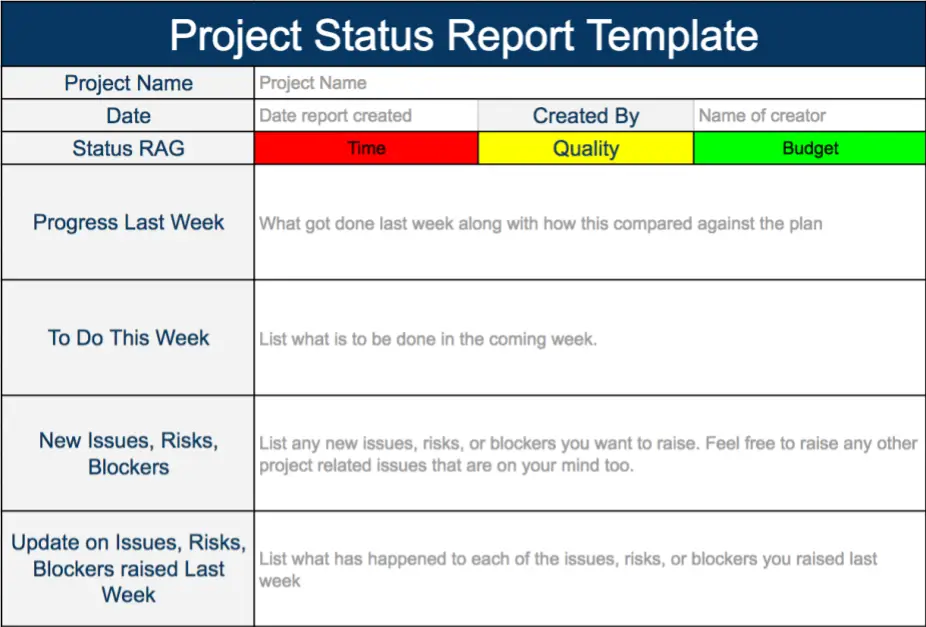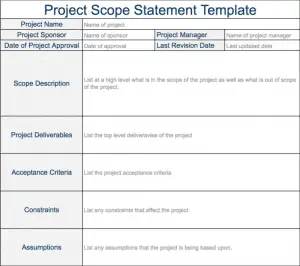As you proactively manage your project, and as you interact with key stakeholders, you’ll naturally collect information on the status of your project. In addition to this, for all but the most simple of projects, it’s a good idea to both meet with your project team one a week and get a formal project status report showing weekly progress.
This meeting should be kept brief, so as not to slow the project down. It shouldn’t need any more than 5 minutes per person to report their status. You should collect your weekly project status reports in advance of this weekly meeting so as you have good time to review any issues raised before the meeting. Again, the bureaucratic overhead should be light so this report shouldn’t take more than 5 minutes for each team member to complete from week to week.
Project Status Report Template
The report that each team member fills in will vary based on the project and organization, but will typically contain the following information:
An example of such a status report is shown below:

There are a couple of important things to notice in this report:
- An overall project status is provided by a RAG (red, amber, green) status indicating if the project is on track in terms of time, quality, and risk.
- The Date and Created By entries are important. Without these as the weeks go by it’s easy to lose track of the multiple reports you will receive each week.
- As you can imagine, if a project is running for any amount of time, then lots of issues and risks will be raised. If these issues and risks were always handled in this report then the report could easily become unwieldy as the number of risks and issues being handled increases. For this reason it’s common to move issues and risks out of this report fairly quickly and into your risk and issue management processes respectively.
Once you have been through all of the reports in your weekly project status meeting, you can collate the information of all the reports you have been provided and create an overall high-level project update for your project sponsor.
You can even use the exact same report format as your team have provided you, or make a few changes to reflect the overall project status and the needs of your project sponsor.
In the report you’ll want to pick out key points from the project status reports you have been provided, as well as describing the issues you face as project manager. It’s also a good idea to include the total number and relative change in the number of risks and issues since the last report (as well as other pertinent data depending on your project).
Finally, you might also want to run a deep-dive into the project status with your project sponsor and steering committee, where you go into detail as to the status of each part of the project. This will also give them the opportunity to feedback their issues and concerns to you.
How frequently you’ll want to organize these meetings is up to you, but they will typically not happen as frequently as your project meetings. If your project meetings are daily then your deep dive might be weekly, whereas if your project meetings are weekly your deep dive might happen monthly.
Project Status Report Summary
A project status report template provides a formal way to collect a weekly status update from each of your project team members. The same report can also be used to provide an update you your project sponsor and steering committee, by collating the information you’ve been given from your project team.
To be useful a good weekly project status report shouldn’t require more than 5 minutes to update from one week to the next. If, based on the report you need to dive deeper into an issue, then this can be done in your weekly project team meeting.










